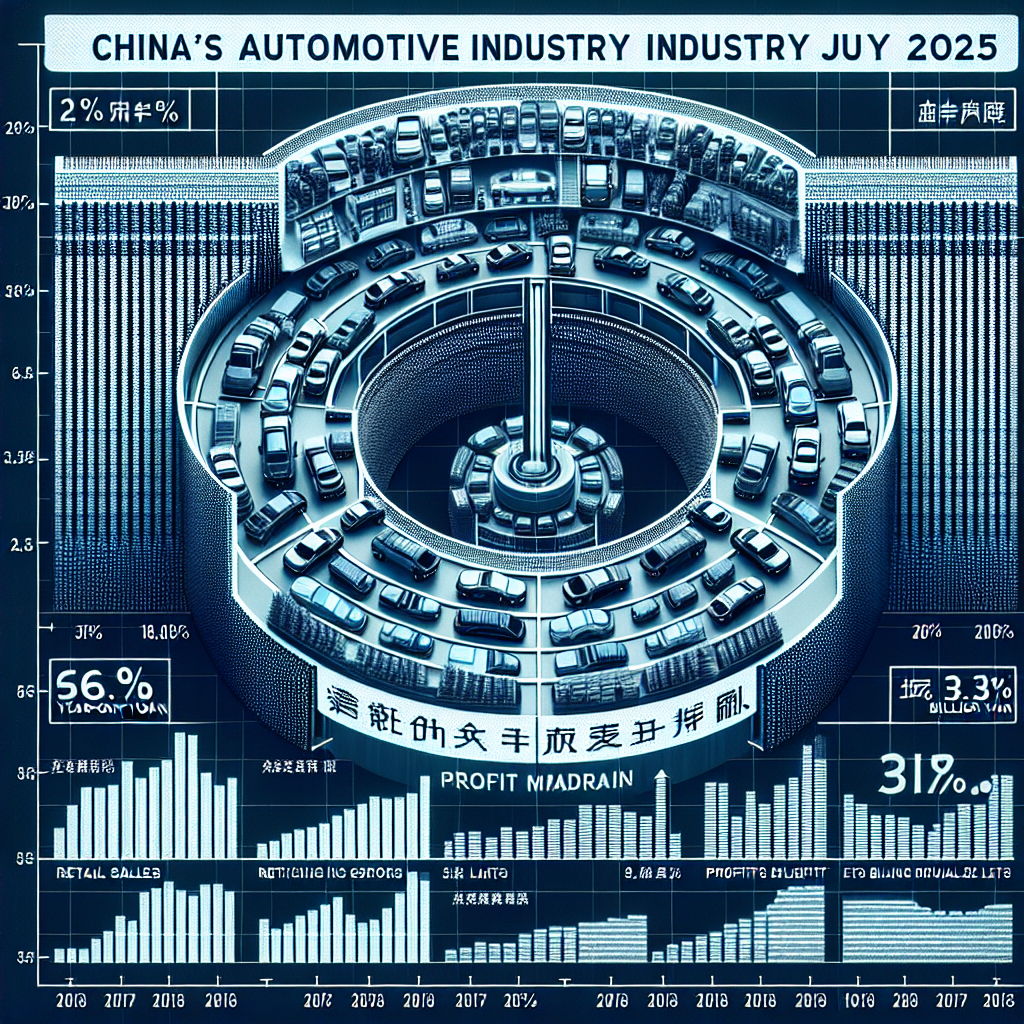According to recent data released by the Passenger Car Association, in July 2025, the retail sales of China’s automotive industry increased by 6.3% year-on-year, with profits of 29.3 billion yuan, a 17% decrease compared to the previous year, and a profit margin of only 3.5%. Selling more but earning less has become a common phenomenon in the industry.
The Secretary-General of the Passenger Car Association, Cui Dongshu, shared data on their official account, reporting that the total retail volume of passenger cars in July across the country reached 1.826 million vehicles, a 6.3% increase year-on-year. Since 2025, cumulative retail sales have reached 12.728 million vehicles, showing a 10.1% increase.
During the same period, the total wholesale volume of passenger car manufacturers nationwide was 2.221 million vehicles, hitting a historical high for the month with a 13.0% year-on-year increase. The country produced 2.229 million passenger cars in the same month, a 12.1% increase year-on-year. Additionally, from January to July, 15.458 million passenger cars were produced, reflecting a cumulative increase of 13.2%.
However, despite these positive figures, the worrying aspect lies in the profit margins. Selling cars without making profits and losing money has become a common practice for many car manufacturers.
According to recent data from the Passenger Car Association, in July, the automotive industry in China saw profits of 29.3 billion yuan, a 17% decrease compared to the previous year, with a profit margin of only 3.5%. This significant decline from 6.9% in June and 4.4% in July of the previous year marks a recent low point. From January to July this year, the industry’s profits reached 273.7 billion yuan, with only a 0.9% increase year-on-year, and a profit margin of 4.6% compared to a 4.8% margin in the preceding 6 months.
Through financial data, it becomes apparent that the Chinese automotive industry boasts strong production and sales figures, but its profit-making ability is weak, with low profit margins and even falling into losses.
Based on annual financial reports, SAIC Group’s revenue in 2024 was 627.59 billion yuan, marking a 15.73% decrease from the previous year. The net profit attributable to shareholders was 16.66 billion yuan, an 88% decrease year-on-year, and after deducting non-recurring gains and losses, the net loss for the year was 5.409 billion yuan.
Among the new energy brands, losses are not uncommon. NIO’s financial report for 2024 revealed a revenue of 65.73 billion yuan, an 18.2% year-on-year increase, with 221,970 new cars delivered, a 38.7% increase. Despite these impressive figures, the company incurred a net loss of 22.4 billion yuan for the year, expanding by 8.1%, and its gross profit margin dropped from 18.9% to 7.6%.
Beiqi Blue Valley’s new energy brand Jihu achieved sales of over 10,000 vehicles for 5 consecutive months in the second half of 2024, reaching a new high of 12,000 vehicles in December. However, the company’s net loss for the year expanded to 6.948 billion yuan, with a negative gross profit margin of -14.94%, putting the manufacturer in an awkward situation of increasing losses.
Analysis from 36Kr attributes the negative cycle in the Chinese automotive industry to the “price war” that began in 2023.
In 2023, Citroën C6 initiated a price war with a maximum discount of 90,000 yuan, followed by many other car companies, completely disrupting the ecological balance of the automotive market.
In early 2024, leading new energy car manufacturer BYD lowered the prices of its products like the Qin and Song to boost sales, offering the Qin PLUS for under 80,000 yuan, even cheaper than equivalent gasoline cars. Subsequently, numerous new energy brands followed suit.
Wang Xia, Chairman of the China Council for the Promotion of International Trade Automobile Industry Branch, previously stated that bottomless price wars and blind technological surges are squeezing the reasonable profit space of enterprises, ultimately harming product quality and service.
He believes that when competition turns into a a zero-sum game of “quantity in exchange for price,” both enterprises and consumers will end up as losers. Under such circumstances, the profitability of car manufacturers is inevitably reduced.
Data shows that Volkswagen Group’s high-end brand Porsche achieved a revenue of 40.08 billion euros in the 2024 fiscal year, with a profit of 5.64 billion euros. Although this marked a 22.7% decrease compared to the previous year, Porsche’s per-vehicle profit remained high, indicating that a focus on high-end and differentiation can bring higher gross profit margins to the business.
Many car companies have repeatedly opposed price wars and “overlapping” competition in various contexts, hoping to gradually break free from the trap of “low-price competition” by enhancing design, quality, and service. However, whether this can be achieved as planned depends on the success of China’s automotive industry in independently developing capabilities.

